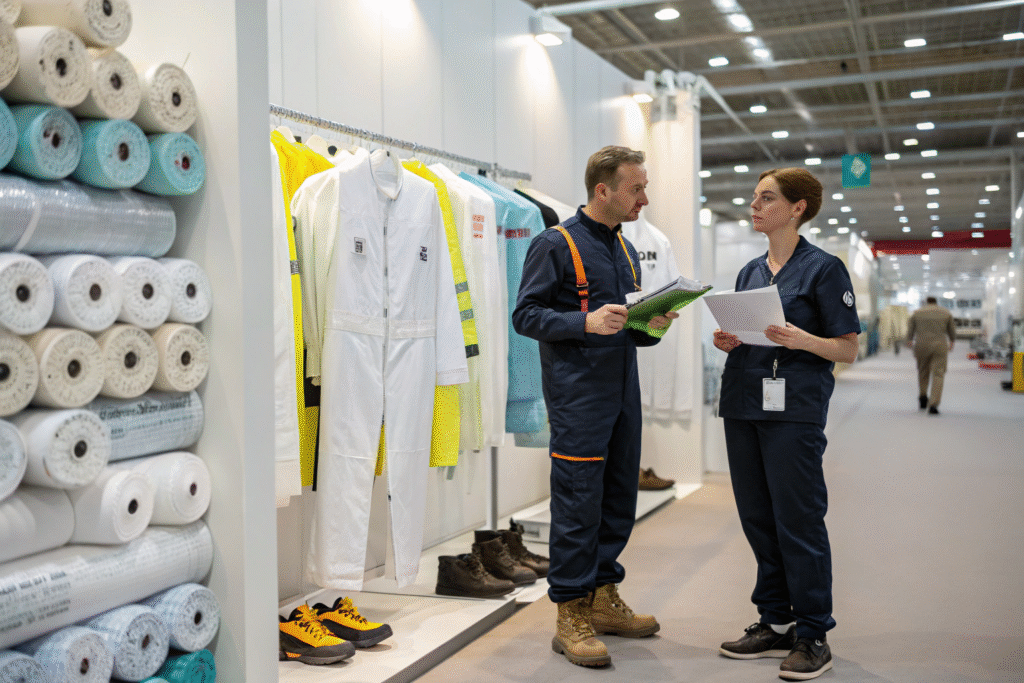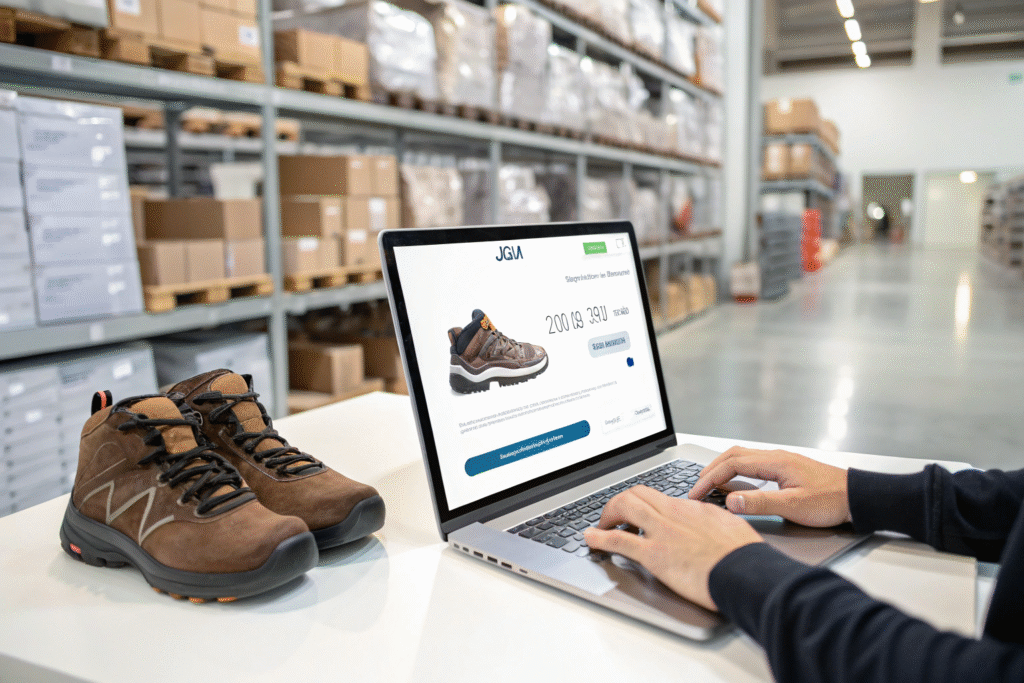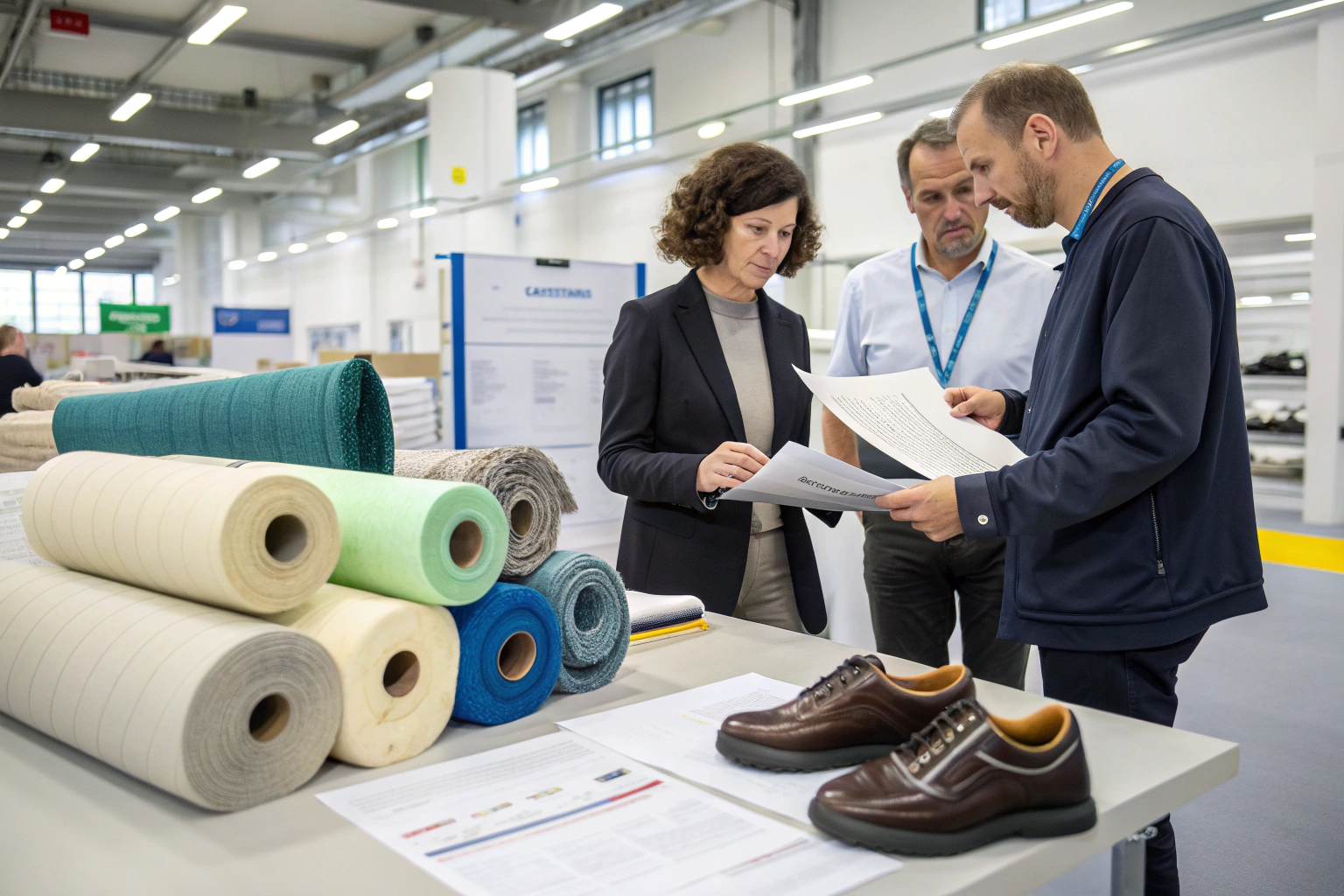When buyers in industries like electronics, chemical processing, and oil & gas search for footwear that meets strict safety standards, the biggest challenge is finding materials that balance electrostatic discharge (ESD) protection, durability, and certification compliance. Many procurement teams struggle with inconsistent suppliers, unclear certification details, and lack of transparency in testing standards. These issues create delays in sourcing and increase compliance risks for international companies.
The answer is that EN 1149-5 certified materials are widely available from specialized textile and footwear suppliers who focus on ESD protection. While the standard primarily applies to garments, many materials developed for it are also used in ESD footwear systems, ensuring full compliance when paired with EN-certified clothing.
For international buyers, understanding where to locate these materials—and which suppliers can guarantee proper certification—is the key step in building a safe, compliant supply chain. Therefore, this article explains where to find the right suppliers, why these standards matter, and how to evaluate options in order to make smarter purchasing decisions.
Best Sources for EN 1149-5 Fabrics and Materials
The global supply chain for EN 1149-5 fabrics is highly concentrated in specialized industrial hubs. As a supplier rooted in Keqiao, Zhejiang, we understand how important sourcing certified fabric is for brands, manufacturers, and end-users. Buyers like Ron in the U.S. prefer suppliers that can provide both certification documentation and consistent quality with every shipment. Because demand is rising in electronics and protective wear industries, suppliers with accredited labs and faster sampling services are gaining trust globally.
The best sources are international certified textile manufacturers in China and Europe who test their fabrics under EN 1149-1 and EN 1149-3 standards, the foundation of EN 1149-5 compliance. These fabrics are then used to manufacture ESD clothing and accessories, including footwear lining materials.

How Do Certified Fabric Suppliers Test Their Materials?
Manufacturers rely on CNAS-accredited or SGS labs to ensure compliance. They check surface resistivity and charge decay time to prove that the fabrics meet EN requirements. Without this testing, there is no reliable way to confirm compliance. Leading companies like SGS and Intertek are globally recognized for textile testing, making their certificates trusted by importers worldwide. This is why many procurement managers request third-party testing before signing contracts.
Which Countries Lead in EN 1149-5 Material Production?
China and European countries like Germany and the Netherlands are key producers. China offers competitive pricing and large-scale production, while Europe specializes in high-value, customized solutions. For example, XM Textiles is a leading European supplier of certified fabrics for ESD garments, while suppliers in Keqiao focus on fast delivery and high-volume capacity. Because buyers need both cost efficiency and certification credibility, they often work with a mix of Chinese and European suppliers.
Where to Buy ESD Footwear Materials Online?
While EN 1149-5 directly applies to fabrics and garments, ESD footwear must comply with EN 61340-4-3. This standard sets the resistance range required for conductive or dissipative shoes. As industries adopt stricter safety rules, footwear buyers must source ESD insoles, conductive fabrics, and anti-static PU soles from specialized suppliers.
The most reliable way to purchase these materials is through B2B platforms like Alibaba, Global Sources, and direct factory websites. By doing so, buyers ensure both certification and supply chain traceability, which reduces risks during customs clearance and product audits.

Which Platforms Offer Verified Certified Suppliers?
Platforms like Alibaba and Global Sources host hundreds of suppliers, but not all are equal. Because many factories display incomplete certification, buyers must check for EN or IEC test reports. For footwear buyers in the U.S., working with suppliers who offer third-party testing from TÜV or SGS adds extra assurance.
Can Buyers Request Custom-Made ESD Materials?
Yes. Many Chinese manufacturers provide OEM and ODM services for ESD footwear. For instance, Ace Star Industries in Malaysia and Pengerda Safety in China allow buyers to customize resistance ranges, material combinations, and branding for their footwear lines. Since production flexibility directly impacts supply chain efficiency, these services are especially valuable for mid-sized and large U.S. importers.
Key Standards Every Buyer Should Know
Understanding the standards is essential for compliance. Many buyers confuse EN 1149-5 with footwear certification, but the two are linked in a broader ESD protection system. Because of this overlap, a clear grasp of certification differences helps avoid costly compliance mistakes.
The correct approach is to combine EN 1149-5 garments with EN 61340-4-3 compliant shoes to form a full grounding system. Only when both requirements are satisfied can companies guarantee employee safety in ATEX or high-risk electronic environments.

Why Is EN 1149-5 Important for Footwear Buyers?
Because ESD shoes alone cannot guarantee full protection. In ATEX explosive environments, shoes must be paired with certified garments to dissipate charge safely. Organizations like ProGARM emphasize that without EN 1149-5 certified clothing, the footwear alone cannot meet compliance requirements. This shows how interconnected garment and footwear standards are in practice.
What Are the Resistance Ranges for ESD Shoes?
According to Widaco, ESD footwear must maintain resistance between 0.1 MΩ and 100 MΩ. This ensures safety in electronics factories, laboratories, and petrochemical facilities. Because the range prevents both insufficient dissipation and unsafe conductivity, buyers should always verify these values in technical sheets before purchasing.
How to Evaluate the Right Supplier?
Choosing the right supplier is the final step to ensure compliance, cost-efficiency, and timely delivery. Buyers often struggle with poor documentation, late shipments, or inflated costs. Because supplier credibility directly affects procurement outcomes, careful evaluation is necessary.
The right supplier should provide testing certificates, flexible order quantities, and financial stability. As a Chinese manufacturer with over 20 years of experience, we have seen how this trust shapes long-term business relationships.

What Certification Documents Should You Always Request?
Always ask for EN 1149-5 test reports, EN 61340-4-3 footwear resistance tests, and CNAS/SGS lab results. Without these, it is impossible to ensure compliance. Verified suppliers like Fristads and ProGARM highlight the importance of certified documentation for international buyers. Because audits often focus on document traceability, missing certificates can cause shipment delays.
How Can Financial Stability Protect Buyers?
Strong financial backing ensures suppliers can handle large-volume orders without disruptions. Our company works with strategic banking partners to guarantee smooth cash flow, avoiding production or shipping delays that many buyers experience with smaller factories. Since financial strength translates into uninterrupted supply, it becomes a competitive advantage in international procurement.
Conclusion
Finding EN 1149-5 certified ESD footwear materials requires a clear understanding of the standards and a reliable supplier network. Buyers must combine certified fabrics and footwear to build a compliant system for ATEX and ESD environments. By sourcing from tested suppliers in China and Europe, international buyers can secure both safety and cost efficiency.
If you are considering sourcing your next batch of certified ESD footwear or fabric, we at Shanghai Fumao can help. You can contact our Business Director Elaine at elaine@fumaoclothing.com to discuss your project and begin developing your custom certified materials.










